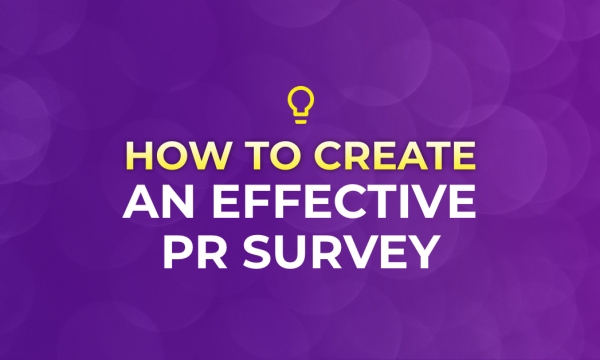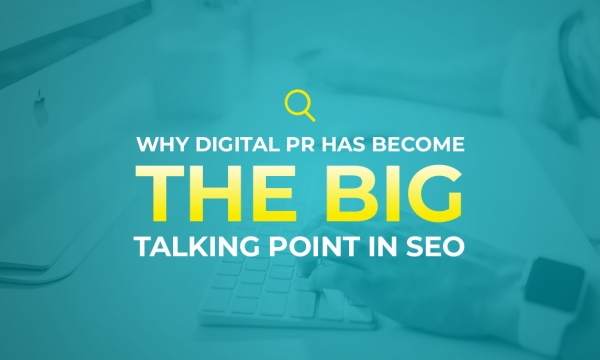
Do you work in PR? Have you ever sat down with your SEO team for a chat? If you haven't, then now is the time to get better acquainted.
As reputation management and content marketing become increasingly important marketing strategies, PR is changing, and digital and PR teams have to start working more closely together as a result. PR teams have traditionally worked in silos, but this is fast becoming a thing of the past as PR increasingly integrates with social, brand, SEO and content.
The world of marketing is moving online more and more, meaning every piece of content that you create and distribute is playing an increasingly important role in your visibility and engagement with your target audience, whether it be positively or negatively. With more than 6 billion Google searches per day (Source: Google Official History, Comscore), it's more than likely that in-house SEO teams have realised the importance of using and seeding content in their strategy.
In order to maximise your PR and SEO activity your teams should work closely with each other; it's a two way street. Here’s why.
Good news impacts search results
Whether you've realised it or not, search engine optimisation has been impacted by PR for years. Getting brand mentions through online media publications alters what web users see when they search your brand name. The more positive the SERPs, the more inclined the user is to trust your brand and make a purchase. If you can get positive mentions from influential websites, then negative stories will be pushed down the search results and your positive mentions will dominate. This is what your SEO teams dream about for their strategy. Google is looking for these signals when deciding where to rank your brand for name and related search terms.
There is no real tangible way to report on advertising value equivalent (AVE) rates for a website (the value of column inches in a newspaper had you paid for it), therefore SEO is the best measurement for PR professionals to use. With PR effecting website traffic, rankings and in the long run, sales, you now have an attributable set of results and activity. When the board ask “what’s this worth to the business?”, reporting can now be backed by valuable statistics that go beyond simply how many pieces were seeded out to the media.
Measuring PR activity
Keeping SEO in mind when implementing your PR approach means there are multiple factors that can be measured. Individual business objectives must always remain at the forefront of reporting, but here are some examples that will help flesh out your reporting and help you evaluate your approach as you move forward.
- Site traffic – has the number of unique visitors increased?
- Rankings – brand name, long tail search terms. Have these improved?
- Average time on site – if you have relevant and engaging content your audience will dwell for longer; Google likes this.
- Inbound links – are people linking to content on your website (with follow links)?
- Social mentions – how many users are including your brand name or hashtag?
- Social referrals – how many visitors have come to your site from social media?
- Audience reach - how many people have you put your message in front of?
- Brand mentions – how many times is your brand referred to online?
- Enquires/Sales – cold hard cash, has your campaign led to increased sales?
- Domain authority of coverage – where have your seeded your content? The higher the better, as the website is deemed more authoritative.
- Page authority of any resource on site you're linking to – has it improved?
Doing in depth reporting means you may realise that a PR tactic you’ve been using for years just doesn't impact on the business in the way you'd hoped or thought it did. That’s why an SEO-led approach is so good; it'll teach you very quickly what's working and where you need to focus your attention to get the best response for your audience.
If you secure a comment piece in the Daily Telegraph and this brings increased traffic or social mentions, then media train your spokespeople and work on raising their profiles, as the the resulting SEO benfits are telling you that this approach works for your business. Place a luxury product with high price tag in a tabloid and the SEO results will likely show that the coverage had no impact. Traditionally this would have been reported a reach of over 2 million people, with an AVE of £1000. This is an example where rethinking your appraoch is vital.
PR agencies and clients cannot approach coverage on a volume basis, as it isn’t sustainable. Eventually the apex will be reached and the client will be inclined to question where the ROI is if they don't see the volume of coverage going up. This is where you can call upon SEO for better measurment criteria, such as domain authority.
Next steps
Internal teams need to communicate with each other if this approach is going to work. From the conferences and events we've attended as an agency in the past year, it is clear to us that a lot of businesses across various verticals are struggling with this. Stakeholders in charge of PR, content, brand, Social and digital are not collaborating to acheive the best possible results and whilst it may sound obvious, a team working as one is better than teams working in silos, so teams need to share ideas and deployment strategy.
Find our more about our approach to PR and SEO by getting in touch with our team.
As featured on:




